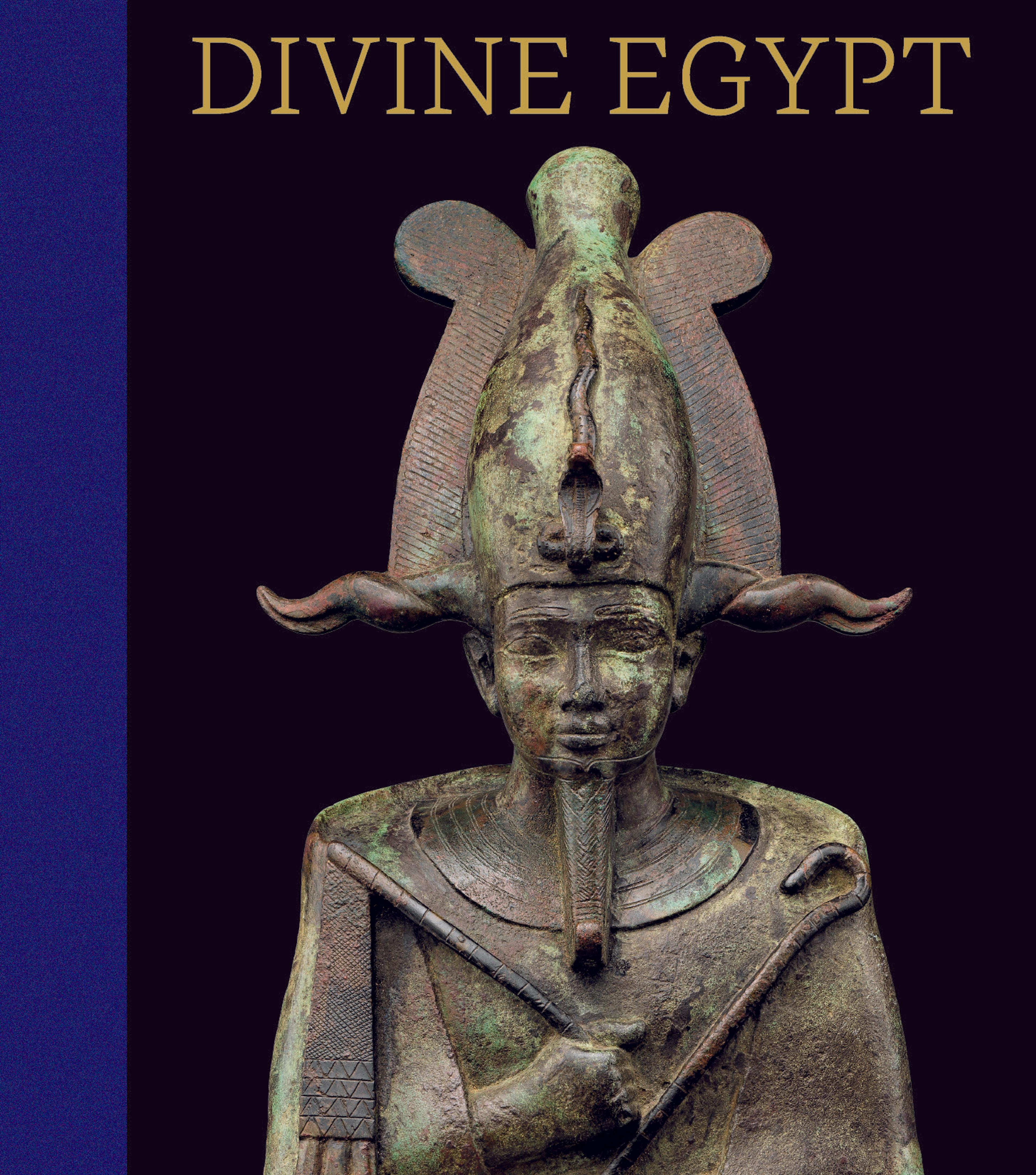Arm Panel From a Ceremonial Chair of Thutmose IV
On the other side, the panel depicts the enthroned king wearing the red crown of Lower Egypt. In front of him is the lion-headed goddess Weret-hekau who is depicted in coronation scenes and is associated with the uraeus cobra at the front of the king's crown. Behind the king is the ibis-headed god Thoth who presents him with "millions of years of life and dominion united with eternity."
A second arm panel from the same throne is now in the Museum of Fine Arts, Boston. They were discovered in Thutmose IV's tomb in the Valley of the Kings by Theodore M. Davis, who acquired them in the division of finds. The scenes on the panels suggest that the throne was used either for the king's coronation, or for his thirty-year rejuvenation festival, the Heb-Sed.
Artwork Details
- Title: Arm Panel From a Ceremonial Chair of Thutmose IV
- Period: New Kingdom
- Dynasty: Dynasty 18
- Reign: reign of Thutmose IV
- Date: ca. 1400–1390 BCE
- Geography: From Egypt, Upper Egypt, Thebes, Valley of the Kings, Tomb of Thutmose IV (KV 43), Davis/Carter excavations, 1903
- Medium: Wood (Ficus sycomorus?)
- Dimensions: H. 26 × W. 30 × Th. 2.2 cm (10 1/4 × 11 13/16 × 7/8 in.)
- Credit Line: Theodore M. Davis Collection, Bequest of Theodore M. Davis, 1915
- Object Number: 30.8.45a–c
- Curatorial Department: Egyptian Art
Audio
3415. Arm Panel from a Throne of Thutmose IV
Gallery 119
On one side of this cedar panel, Thutmose IV appears as a rampant sphinx, treading the enemies of Egypt underfoot. Above the pharaoh hovers the Horus falcon, shielding him with its wings. Near the sphinx’s hind legs, there’s an animated ankh, the hieroglyph for life. It holds up a fan, offering the king the "breath of life." On the other side of the panel, the king sits enthroned and wears the red crown of Lower Egypt. Behind him is the god Thoth. According to the inscription, the god says, "I bring you millions of years, life, well-being, and the attainment of eternity." In front of the king stands the lion-headed goddess Weret-hekau, who is associated with the royal crown.
The panel was once covered with gold leaf. It formed the left arm piece of a throne made for a major celebration, possibly the king's coronation. The arm panel from the throne’s right side is in the Museum of Fine Arts in Boston. These two panels were found in the king’s tomb, along with the vessels and amulets of blue faience on view in the case to your left.
Theodore M. Davis, an American businessman from Providence, Rhode Island, discovered the tomb of Thutmose IV in the Valley of the Kings in 1903. Davis funded excavations in the valley between 1903 and 1912, and his team was very successful. They discovered a number of important royal tombs, although all had been robbed in antiquity. They also found a small tomb containing the almost undisturbed burials of Yuya and Tuya, who were probably the great-grandparents of Tutankhamun. A few pieces from this tomb are on display across the gallery.
Davis left the Valley in 1912, declaring that there was nothing more to be found. But a decade later, in 1922, Howard Carter discovered the tomb of Tutankhamun himself.
More Artwork
Research Resources
The Met provides unparalleled resources for research and welcomes an international community of students and scholars. The Met's Open Access API is where creators and researchers can connect to the The Met collection. Open Access data and public domain images are available for unrestricted commercial and noncommercial use without permission or fee.
To request images under copyright and other restrictions, please use this Image Request form.
Feedback
We continue to research and examine historical and cultural context for objects in The Met collection. If you have comments or questions about this object record, please contact us using the form below. The Museum looks forward to receiving your comments.
